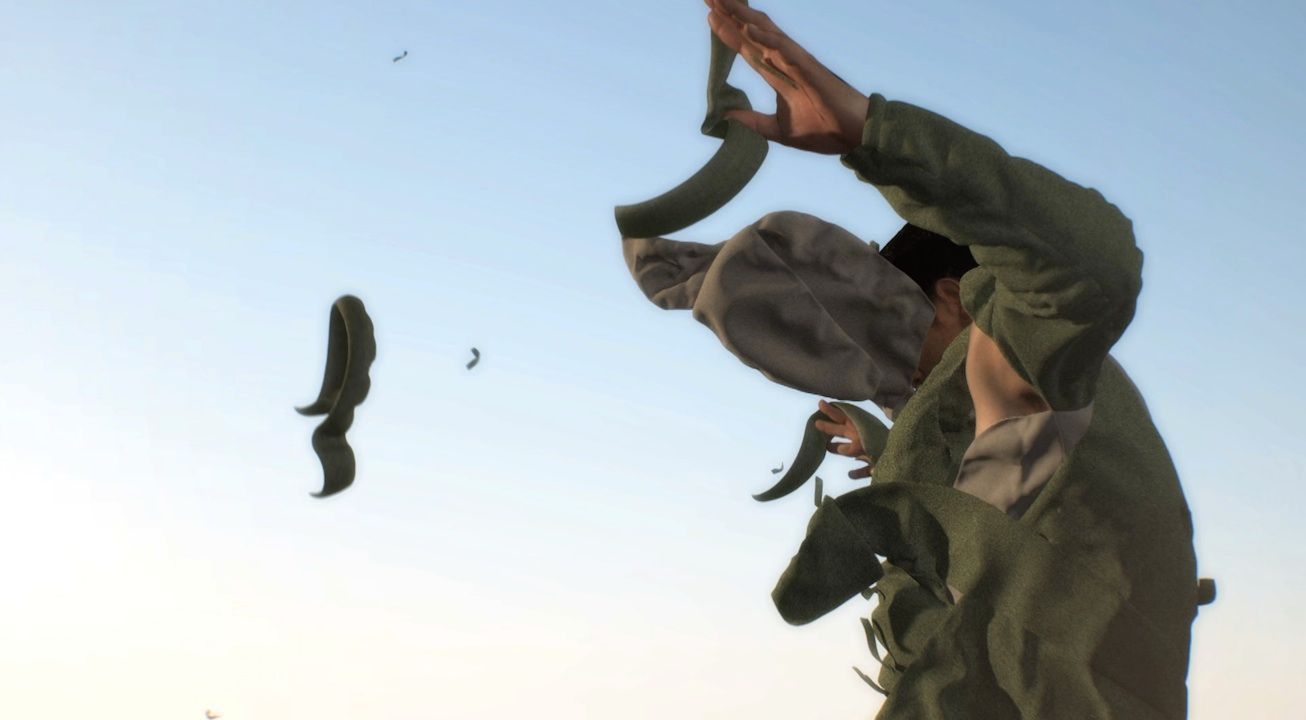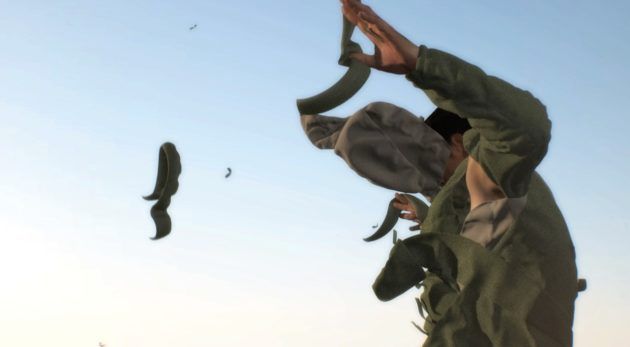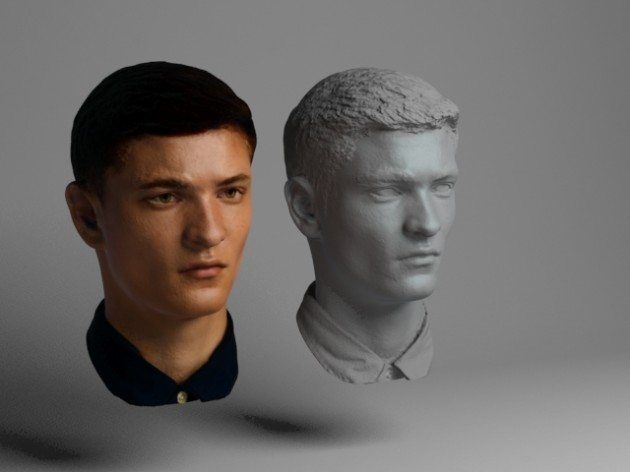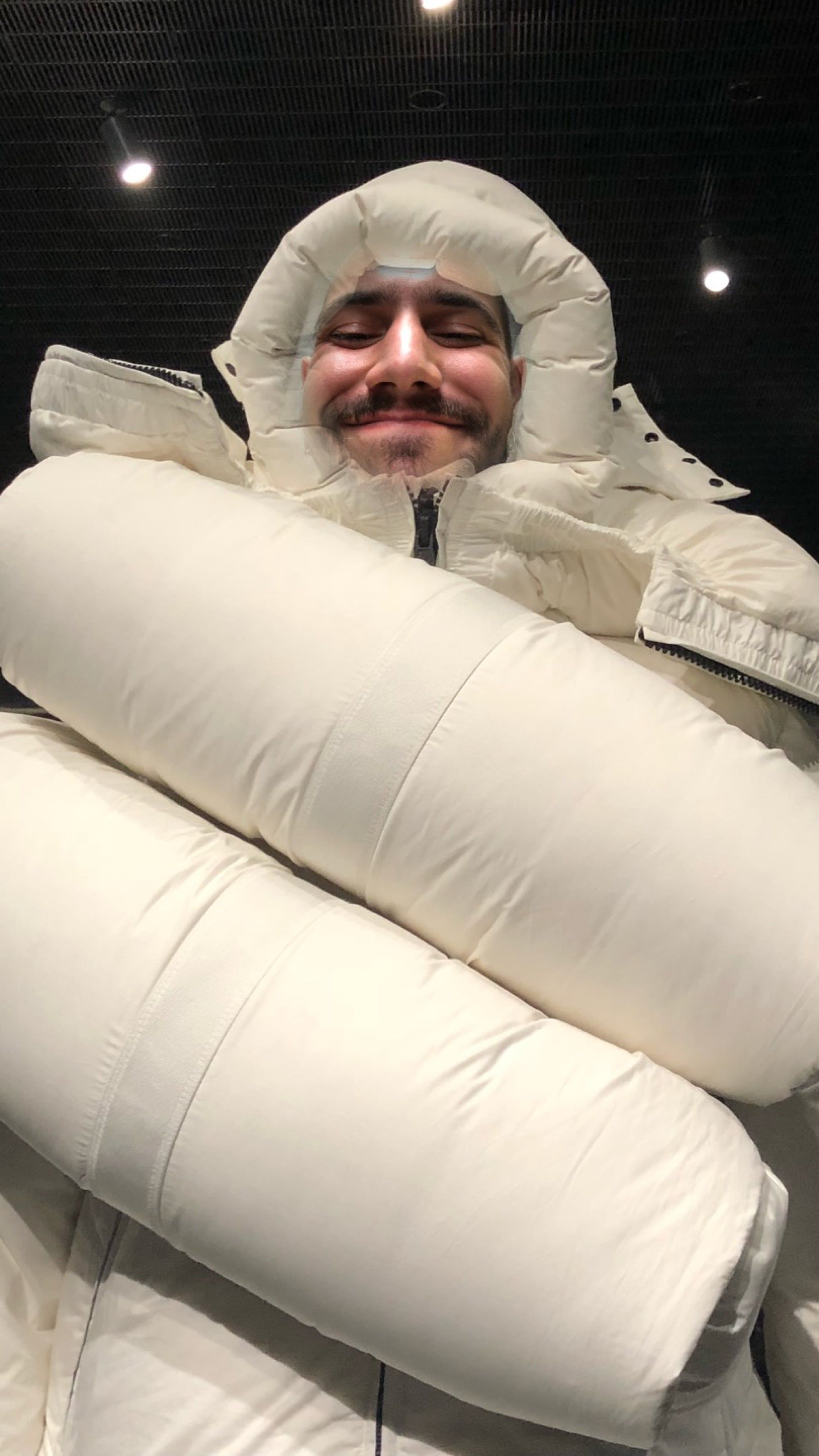3D MERIDIAN: A Closer Look at this Season’s Most Advanced Fashion Film for CHRISTOPHER RÆBURN

In the fully animated fashion film “Meridian,” THOMAS TRAUM and CHRISTOPHER RÆBURN test the limits of a genre that is normally entranced by human presence. Here, the aura of fashion morphs into CGI anonymity, a supersonic spectacle of man-machine mutation.
Utilizing new developments in digital cloth-modeling and animation software, Traum’s film “Meridian” is an protean journey from runway to runway. It begins in a desolate airfield, where a mysterious wind rustles the tarps that cover fuel tanks and defunct fighter jets. The tarps are eventually launched into the sky, where they splinter and fuse with a man entering from mid-air. The man then lands in the desert as a fully clothed model, an ultra-realistic rendering taken from 3D scans of garments from Ræburn’s collection.
Inspired by jet aviation and an ongoing commitment to sustainability, the Christopher Ræburn SS15 collection features garments that have been reconstructed from Swiss military rain capes and MIG fighter pilot flightsuits. The look is an homage to the Desert Boneyard in Arizona, a military airfield where over 4,000 obsolete flight machines from the pre-digital era of supersonic warfare are stored awaiting strategic re-integration.
032c spoke with Traum about the film’s concept.
What inspired the concept of this film? How did the decision to use 3D digital animation come about?
One of the big themes in Christopher Ræburn’s practice is the idea of REMADE. So, in our film, we wanted to establish a link between the inspiration of the collection and the final product that was driven by the idea of REMADE. Christopher Ræburn’s inspiration for the SS15 collection was this plane cemetery in Arizona, and our idea was to take the viewer on a journey from the deserted plane yard straight onto the runway of a fashion show. We loved the idea of the garments being composed out of elements from the plane yard and the model dropping of the sky to then walk out into the world. So there is a surprising transformation from the military waste to a powerful human wearing a beautiful and intricate garment. I think the driving factor in the decision to use 3D was the ability to add to – or heighten – digitally created environments without being constrained by reality and cost.
Much of the imagery in the film seems reminiscent of video or computer games. Was that a conscience influence, or it that texture more of a byproduct of the technology?
I have been looking quite a bit into game engines lately for different projects – for example, this one – and their look and feel is something I’m fascinated by. I often prefer the more unpolished, raw energy of 3D – not trying to imitate reality, but rather exploring the boundaries between. That leads to a more “computer game” look at times.

What were some of the aesthetic challenges that you had to overcome while using 3D digital animation to make a fashion film? Were you concerned at all about running into an “uncanny valley” effect?
Modeling the main look with all the parachute elements was a challenge in itself, and only possible with specialized cloth-modeling software. Fabian Rosenkranz, who re-modeled the look in 3D, did an incredible job. I was most concerned with the 3D look not being close enough to the garment, because we still wanted to capture that sensation of seeing the look for the first time, of being struck by the incredible detail. In fact, in that sense, the “uncanny valley” is something we wanted to explore on purpose.
You mentioned in the press release that the model and look featured in the film is now a fully functional rigged character that can be re-used in other films. Do you have any plans on transporting that character to another context?
We re-used “Jason” – the 3D model – already to make high-resolution photos for the lookbook. I am certainly fascinated by the idea of having a 3D model being linked to a fashion label and reappearing in different contexts through winter and summer seasons. It creates incredible opportunities from a creative point of view.

The use of 3D scanning and printing has become quite popular of late in the field of visual art, especially in the “post-digital” and “post-internet” veins. How do you envision that technology becoming a part of fashion?
I think there definitely is an artistic fascination with the aesthetic of 3D scanning – that sort of hyperreal, detailed feel. But there is already a more hidden process wherein this technology has already been very much a part of fashion, even before artists were using it. This is a great example from 2011. And, as they say, “The result is strange to look at, but the message is clear: buy our clothes, not our models. There are obviously lots of applications for 3D scanning in fashion – to show a look on a website in higher detail, to have a dress as a 3D object to put onto models for a catalogue. For example, in the automotive and furniture industries, most of the images we consume today are already done in CGI. I don’t know how much a 3D model will be able to replace a real model and real clothes in the context of a fashion shoot, but for me, this fashion film was actually about exploring some of those ideas.
Christopher Ræburn SS15 premiered in London this June.
